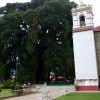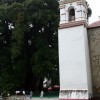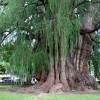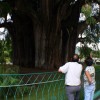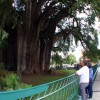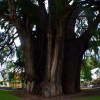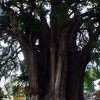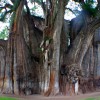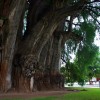Árbol del Tule: Largest Tree Trunk in the World
Just a few kilometers outside the city of Oaxaca, in the town of Santa María del Tule, is a stunning tree with the largest trunk (in diameter) in the world — el Árbol del Tule.
Wikipedia describes it:
El Árbol del Tule (Spanish for The Tree of Tule) is a tree located in the church grounds in the town center of Santa María del Tule in the Mexican state of Oaxaca, approximately 9 km east of the city of Oaxaca on the road to Mitla. It is a Montezuma cypress (Taxodium mucronatum), orahuehuete (meaning “old man of the water” in Nahuatl). It has the stoutest trunk of any tree in the world. In 2001 it was placed on a UNESCO tentative list of World Heritage Sites.
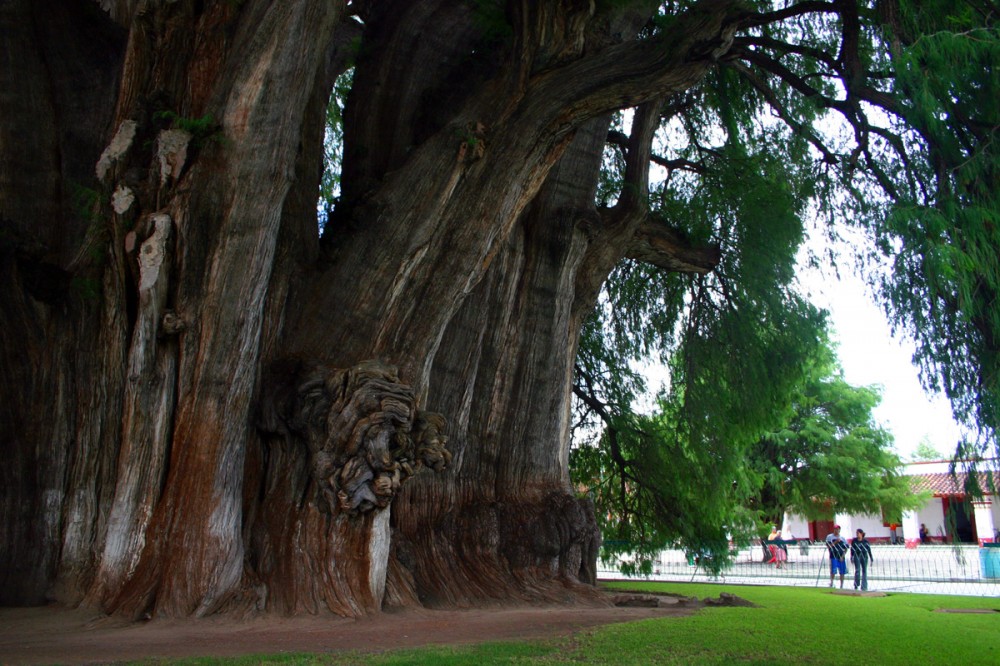
The tree’s proportions are astonishing:
In 2005, its trunk had a circumference of 36.2 m (119 ft), equating to a diameter of 11.62 m (38.1 ft), a slight increase from a measurement of 11.42 m (37.5 ft) m in 1982. However, the trunk is heavily buttressed, giving a higher diameter reading than the true cross-sectional of the trunk represents; when this is taken into account, the diameter of the ‘smoothed out’ trunk is 9.38 m (30.8 ft). This is still slightly larger than the next most stout tree known, a Giant Sequoia with a 8.98 m (29.5 ft) diameter.
The height is difficult to measure due to the very broad crown; the 2005 measurement, made by laser, is 35.4 m (116 ft), shorter than previous measurements of 41–43 m (135–141 ft). According to the signboard by the tree (see gallery, below), it has a total volume of 816.829 m3 and a weight of 636.107 t (701.188 short tons); these figures are however not independently verified, and given the same signboard’s claim of a girth of 58 m (190 ft), must be treated with suspicion.
It is so large that it was originally thought to be multiple trees, but DNA tests have proven that it is only one tree. This does not rule out another hypothesis, which states that it comprises multiple trunks from a single individual.
The age is unknown, with estimates ranging between 1,200 and 3,000 years, and even one claim of 6,000 years; the best scientific estimate based on growth rates is 1,433-1,600 years. Local Zapotec legend holds that it was planted about 1,400 years ago by Pechocha, a priest of Ehecatl, the Aztec wind god, in broad agreement with the scientific estimate; its location on a sacred site (later taken over by the Roman Catholic Church) would also support this.
El Tule, as it is colloquially known, sits on a manicured grass lawn next to a small chapel and is guarded by a short fence to keep visitors from damaging it in close contact. In the streets nearby, feral dogs roam and tourists (both Mexican and international) stroll in the shade. The giant tree attracts daily visitors, some of whom also pray or make offerings in the chapel.
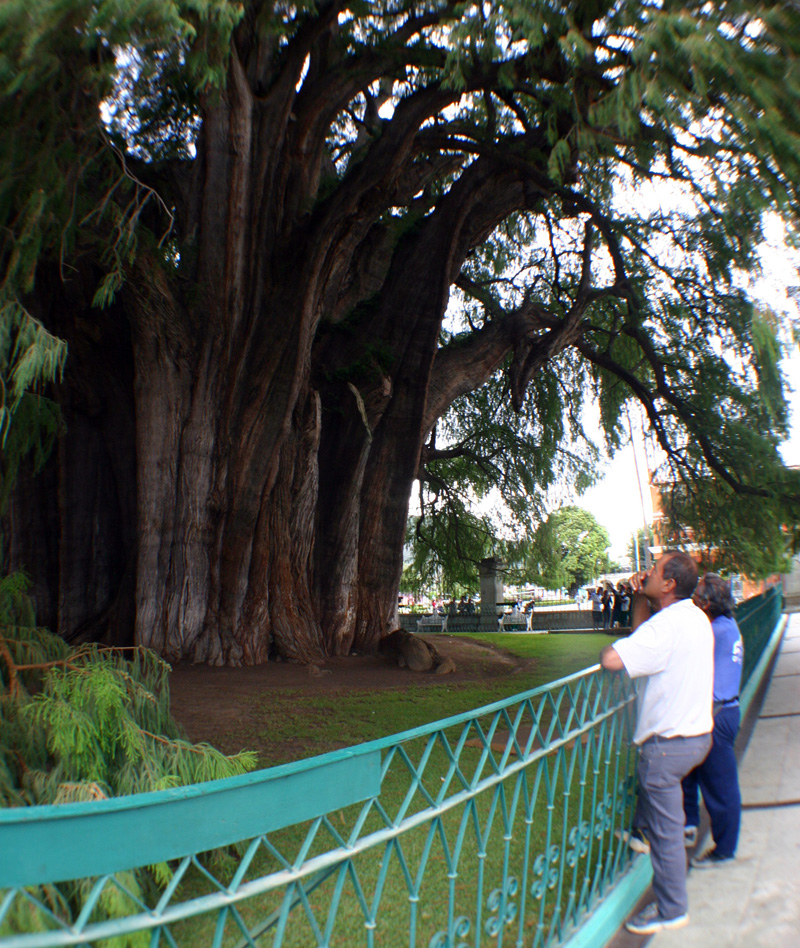
The tree is immense — not so large as the imagination would lead one to believe, however — and is dwarfed in height by the sequoias of northern California. It is still impressive, and very elegant, and somehow sustains an air of tranquility in the surrounding area.
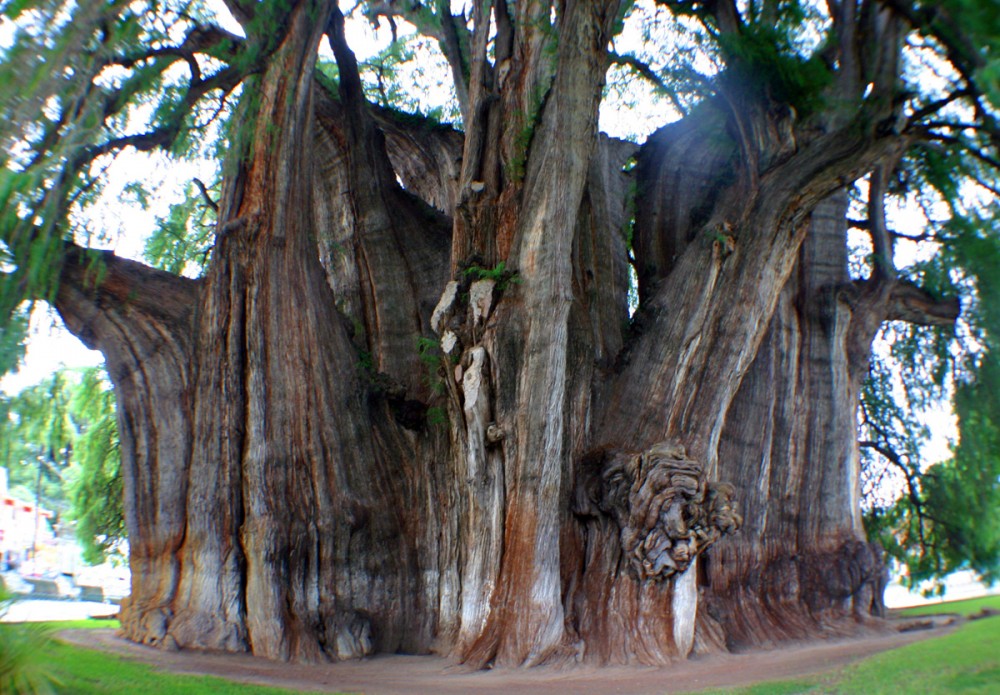
There really is something awe-inspiring about massive trees. El Tule is certainly no exception.

